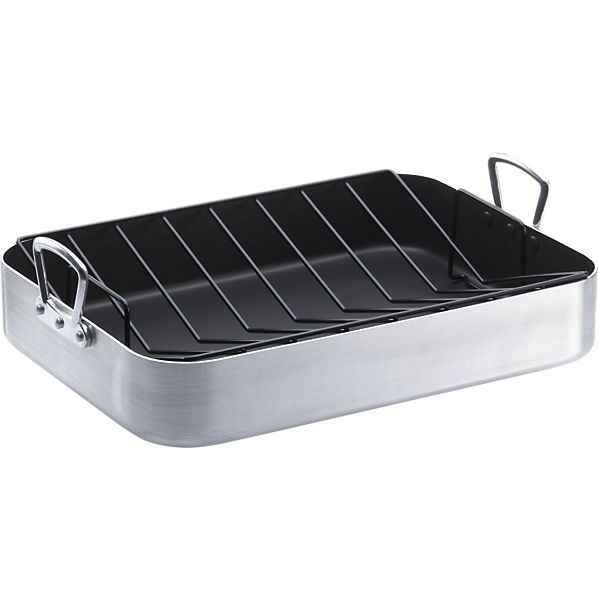Roasting is a culinary technique that transcends generations, bringing warmth and flavor to family gatherings and festive occasions. At the heart of this time-honored tradition is the humble yet indispensable tool – the roasting pan. In this blog post, we’ll uncover the wonders of roasting pans, exploring their features, uses, and how they can transform your roasting game.
1. The Anatomy of a Roasting Pan: A roasting pan is more than just a vessel for holding your Sunday roast; it’s a specialized tool designed to enhance the roasting process. Let’s break down its key components:
- High Sides: The high sides of a roasting pan prevent splattering and contain juices, keeping your oven clean and ensuring flavorful, succulent results.
- Rack: A roasting pan often comes with a removable rack that elevates the meat, allowing hot air to circulate evenly. This promotes even cooking and a beautifully browned exterior.
- Material Matters: Roasting pans are commonly made from stainless steel, aluminum, or cast iron. Stainless steel pans are durable and resistant to corrosion, while cast iron offers excellent heat retention.
2. Versatility in Roasting Pans: Roasting pans aren’t just for roasts; they’re versatile kitchen workhorses. Here’s how you can make the most of your roasting pan:
- Roasting Meats: Whether it’s a succulent turkey, a flavorful leg of lamb, or a juicy chicken, a roasting pan is your ally for achieving that perfect, crispy exterior and tender interior.
- Vegetables and Sides: Spread seasoned vegetables on the pan alongside your roast, and let them soak up the delicious juices, creating a one-pan masterpiece.
- Broiling and Grilling: Some roasting pans are designed for use on the stovetop as well. Utilize them for broiling or grilling smaller cuts of meat or for making a rich pan sauce.
3. Choosing the Right Roasting Pan: Selecting the right roasting pan is crucial for achieving optimal results. Consider the following factors when making your choice:
- Size: Ensure the pan is large enough to accommodate your roast comfortably without crowding. This allows for proper air circulation and even cooking.
- Material: Choose a material that suits your cooking preferences. Stainless steel is easy to clean, while cast iron provides excellent heat retention.
- Easy Cleanup: Look for features like a non-stick coating or a removable rack for easy cleaning after your culinary masterpiece is complete.
4. Caring for Your Roasting Pan: Proper care ensures that your roasting pan serves you well for years to come. Follow these tips:
- Hand Wash: Many roasting pans are not dishwasher-safe, so hand wash them with mild soap and warm water.
- Seasoning (for cast iron): If your roasting pan is made of cast iron, season it regularly to maintain its non-stick properties and prevent rust.

